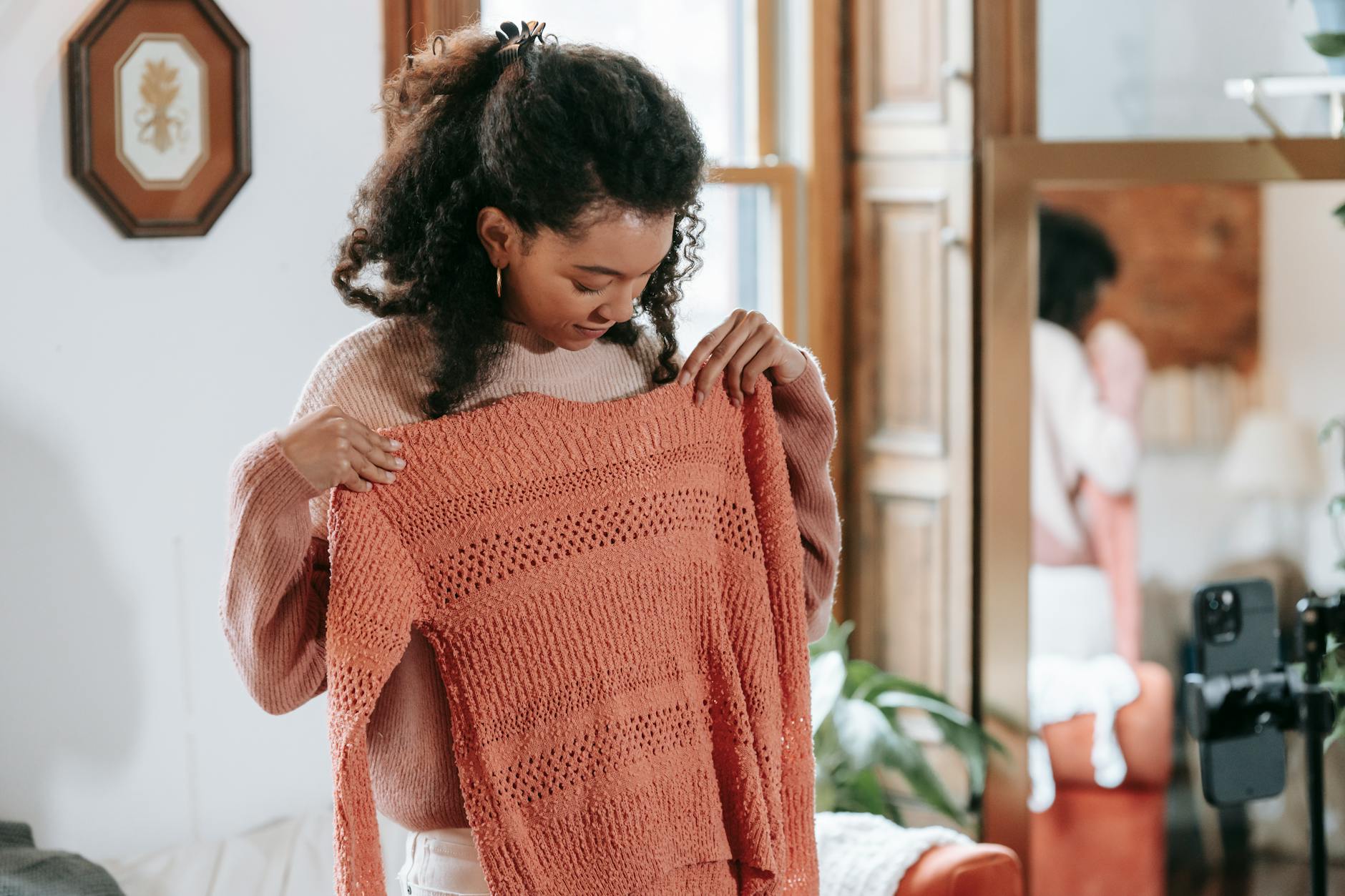What Makes Australia a Hub for Innovative Fashion Design

Australia's Fashion Ecosystem
Australia's fashion scene, which thrives on creativity and innovation, plays a pivotal role in defining our unique style. Living in Melbourne, I often draw inspiration from the vibrant displays at the National Gallery of Victoria's design exhibits. These exhibitions perfectly encapsulate how designers push boundaries, crafting styles that are both functional and trendy.
Influential Regional Styles
Australian fashion is incredibly diverse, with each region boasting its own distinctive flair. From Queensland's laid-back beachwear to Melbourne's sophisticated urban look, the variety is astounding. As someone who enjoys mixing and matching, I find joy in the vast selection available, from casual girls clothes online to chic pants for women,allowing endless combinations that suit any mood or occasion.
Network of Emerging Designers
The Australian fashion industry is bolstered by a robust network of emerging designers. They bring fresh ideas and perspectives, often incorporating elements that pay homage to local culture. Melbourne's fashion scene is a melting pot of these creatives, with many finding inspiration in the city's dynamic arts scene and the artistic lanes of Hosier Lane. It's exciting to witness designers translating their vision into accessible fashion pieces, including stylish girls swimsuits, that combine comfort with on-trend designs for every splash-filled occasion.
Supportive Industry Events
Australia hosts numerous fashion events that support up-and-coming talent. These gatherings foster creativity by providing platforms for designers to showcase their work. Fashion weeks, trade shows, and markets not only highlight established brands but also introduce us to fresh faces in the fashion ecosystem. As a design enthusiast, attending these events is always a source of inspiration, fueling my passion for style and innovation.
Cultural Influences on Design
Indigenous Artistry Infusion
As we stroll through the artistic lanes of Hosier Lane, it's evident how deeply Indigenous artistry is woven into Australia's design fabric. Indigenous patterns and motifs offer a unique perspective, often seen in contemporary fashion pieces. Designers increasingly incorporate these influences, creating a narrative that pays homage to the land's original custodians. This approach is particularly evident in vibrant activewear collections, where the impression of dynamic movement and cultural storytelling meets.
Multicultural Inspirations
Multiculturalism is the heartbeat of Melbourne, evident from creative meetups at Fed Square, where diverse styles converge. Many designers draw inspiration from the rich tapestry of cultures present in the city. This fusion is visible in striking collections of kids activewear that celebrate this diversity while highlighting functionality and fun. These garments reflect the lively and colourful expression of Melbourne's communities.
Seasonal Adaptable Fashion
Melbourne's unpredictable weather often calls for wardrobe adaptability, a theme showcased beautifully at exhibitions like the ones at the National Gallery of Victoria. Here, designers are reimagining clothing that effortlessly transitions between seasons. Whether it's layering with versatile tops like womens bras under different outfits or using innovative fabric technologies, adaptability is key to staying stylish and comfortable throughout the year. Fashion in Melbourne is about more than aesthetics; it embodies practical, climate-conscious solutions for everyday wear.
Advancements in Sustainable Fashion
Eco-Friendly Textile Innovations
As someone who spends a fair amount of time in the vibrant lanes of Melbourne, I'm constantly inspired by the city's creative energy, akin to the design exhibits at the National Gallery of Victoria. The shift towards sustainable fashion has sparked significant advances in eco-friendly textiles. These innovations, designed with both style and sustainability in mind, are reshaping how we think about baby clothes online. Today, we're seeing a surge in materials like organic cotton and recycled polyester, which not only reduce environmental impact but also provide comfort and durability.
Ethical Supply Chain Practices
It's rewarding to see that ethical supply chain practices are becoming a cornerstone of fashion production. This movement is not unlike the artistic lanes of Hosier Lane, where each piece tells its own story. Brands are now more transparent, ensuring fair wages and safe working conditions for all involved. For me, this commitment mirrors the ethos of creative meetups at Fed Square, where collaboration and respect fuel innovation. This ethical stance ensures that our choices, like opting for eco-friendly kids pyjamas, support a larger narrative of fairness.
Role of Digital Fashion Platforms
Digital fashion platforms are proving integral in pushing sustainable practices to the forefront, reminiscent of an artist transforming a canvas with bright, bold lines. They offer insights into the sustainable lifecycle of products and enable us to make informed purchasing decisions. From sustainably produced children’s wear to eco-conscious accessories, these platforms empower consumers to align their wardrobes with personal values and environmental responsibility.
Education and Collaboration
Fashion Institutes and Initiatives
In Melbourne, our vibrant design scene is strongly supported by esteemed fashion institutes that effortlessly blend traditional craftsmanship with modern flair. These institutions act as incubators for emerging talent, providing courses and workshops that encourage students to explore boundaries and foster a deep understanding of textiles. One local gem is RMIT University, which continually pushes the envelope of fashion education through innovative programs.
Designer and Consumer Synergy
A beautiful dance exists between designers and consumers in our bustling city. Consider how the evolving tastes in baby clothes influence design decisions. By understanding consumer desires, particularly those vibrant young families in our dynamic neighbourhoods, designers can create not only aesthetically pleasing but also practical clothing that fits seamlessly into daily life. This collaboration ensures that fashion remains both relevant and exciting.
Collaborative Art and Fashion Projects
Art and fashion frequently intermingle, as seen in collaborative projects dotted throughout Melbourne. These ventures breathe new life into both mediums, taking inspirations from the pyjamas for women that offer comfort and style and transforming them into sleek, modern pieces that could even be worn out exploring the artistic lanes of Hosier Lane. Such projects not only highlight Melbourne's innovative spirit but also empower designers to think outside the box, creating unique, wearable art expressions.
Challenges in the Fashion Scene
Global Brand Competition
As a design enthusiast based in Melbourne, I've noticed that global brands present a constant challenge to our local designers. The creative spirit found in the artistic lanes of Hosier Lane serves as a testament to the unique flair that defines Australian style. Yet, standing shoulder-to-shoulder with well-established international names, our homegrown talent often battles for visibility. Supporting local fashion, much like attending a design exhibit at the National Gallery of Victoria's design exhibits, is vital to nurturing our distinctive voice on the world stage.
Merging Tradition with Innovation
Balancing the rich tapestry of tradition with the demands for modern innovation is akin to walking a creative tightrope. Our designers are continually inspired by the vibrant multicultural influences that Melbourne offers, seen in street art and creative meetups at Fed Square. However, they face the challenge of integrating these diverse cultural elements in a way that respects tradition while keeping pace with innovation. It's a thrilling juxtaposition, something that sees our runways echo with stories of heritage and whispers of future trends.
Embracing Fashion Tech Evolution
The evolution of fashion technology is reshaping how we view and interact with fashion. Whether it's virtual try-ons or leveraging digital platforms to reach wider audiences, this technological shift demands adaptability. As young creative professionals, we must embrace and explore these tech innovations, infusing them into our designs to stay ahead in the fashion scene. Just like a creative workshop, we're empowered to experiment and find new avenues to present our work, making art and fashion projects more engaging and accessible.


